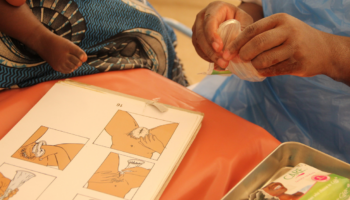The withdrawal method of birth control, also known as "pulling out," is when the male ejaculates outside of the vagina during sex. Many couples rely on this method. The success rates vary, mainly because it’s very difficult to use this method perfectly all the time. The man needs to be very aware of his body to ensure he pulls out before any semen is released, and even then, there can be sperm present in "pre-cum" before ejaculation. Even when used correctly every time, approximately four out of 100 women get pregnant using the withdrawal method in a year. With typical use, the rate is more like 27 out of 100.
If using withdrawal as a birth control method, one way to make it more effective is to track a woman’s menstrual cycle so that she knows when she is ovulating (there's an app for that!), and on the days she is most likely to become pregnant, use a second form of birth control, like condoms or spermicide, or abstain from sex altogether. The tricky part about abstaining from sex on fertile days, however, is that it’s the time when your body most wants to have sex. Oh, biology.




